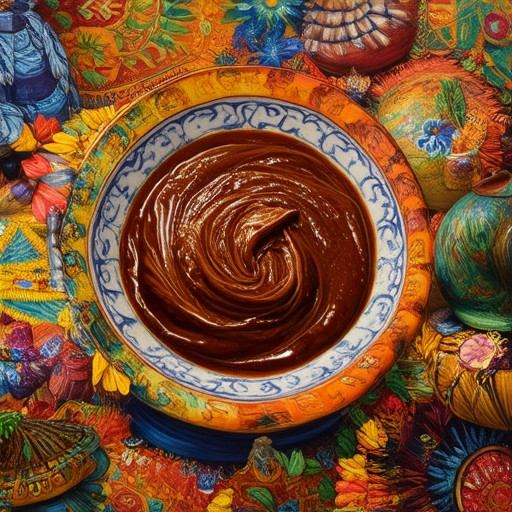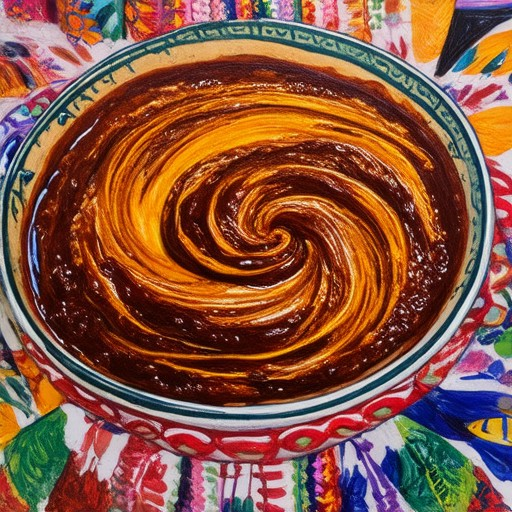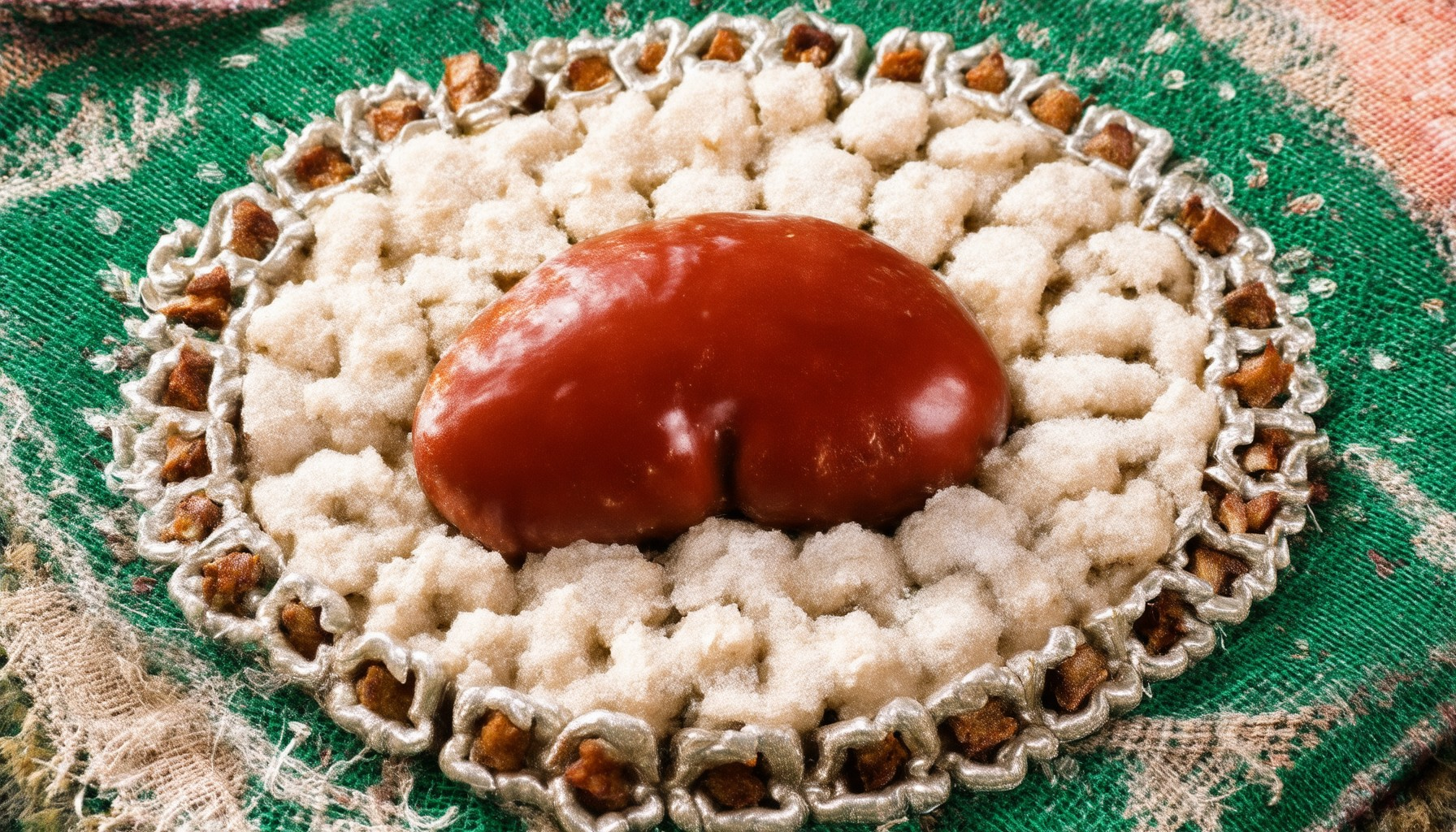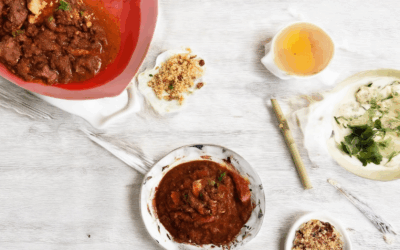Mole, a iconic dish deeply rooted in Mexican culture, transcends mere sustenance; it embodies tradition, history, and celebration. Renowned for its rich, complex flavors, mole holds a special place in Mexican cuisine and culture, particularly during festive occasions. From Cinco de Mayo to Dia de los Muertos, mole is a staple at gatherings, symbolizing warmth, richness, and the joy of shared experiences. This versatile sauce, crafted with ingredients like chocolate, tomatoes, and spices, not only delights the palate but also reflects the country’s culinary heritage and cultural values. Whether it’s adorning dishes like mole enchiladas or mole tacos, this beloved creation is a testament to Mexico’s vibrant traditions and the meticulous care poured into its preparation. As we delve into the significance of mole in Mexican culture, its historical evolution, and its role in celebrated holidays, we uncover a dish that is far more than food—it’s a cherished part of the national identity.

What Does Mole Symbolize in Mexican Culture?
Mole holds a special place in Mexican culture, far beyond its role as a dish. It is a symbol of celebration, tradition, and cultural heritage. Mole sauce, particularly mole poblano, is often considered Mexico’s national dish and is traditionally served during festive occasions.
Celebrations and Traditions
- Día de los Muertos (Day of the Dead): Mole is often prepared and shared during this vibrant celebration to honor loved ones.
- Baptisms, Weddings, and Quinceañas: Mole is a staple at these joyous events, symbolizing abundance and joy.
- Festivals: Mole is featured at various cultural festivals and fairs, showcasing its importance in Mexican traditions.
Panito Mole: Celebrating Authentic Flavors
Panito Mole is dedicated to preserving and celebrating the rich flavors of Mexican cuisine. Our mission is to provide authentic recipes and culinary insights that allow everyone to experience the warmth and tradition of Mexican cooking. Explore our collection of mole recipes and learn the secrets behind crafting perfect pan dulce, made with love and tradition.
Discover Panito Mole’s Recipe Collection
Why Is Mole Important To Mexico?
Mole is a cornerstone of Mexican cuisine, representing a rich cultural heritage and playing a vital role in the nation’s identity. Here’s an exploration of its significance:
- Cultural Symbolism : Mole is more than just a sauce; it embodies Mexican tradition and heritage. It is often served during festive occasions, such as Christmas, and is a staple at family gatherings, symbolizing unity and celebration.
- Historical Significance : With origins dating back centuries, mole has evolved through indigenous and Spanish influences. Its enduring presence reflects Mexico’s culinary evolution and historical resilience.
- Economic Impact : As a sought-after ingredient, mole supports local economies, particularly in regions known for chili production. This demand contributes to agricultural growth and boosts tourism through culinary experiences.
- Nutritional Value : Rich in antioxidants, vitamins, and minerals from ingredients like chocolate, nuts, and seeds, mole promotes public health, contributing to the well-being of Mexicans.
- Tourist Appeal : Mole’s distinctiveness attracts international visitors, showcasing Mexico’s culinary prowess and driving tourism revenue by featuring it in tourist menus.
- Social Role : As a shared food, mole fosters social connections, strengthening community bonds and identity through communal meals.
- Global Recognition : Recognized internationally, mole elevates Mexico’s culinary reputation, leading to global collaborations and exports.
Thus, mole is a multifaceted element of Mexican culture, integral to its history, economy, and social fabric.

Does Mexican Mole Go Bad?
Mexican mole, a rich and complex sauce typically made with chocolate, chili peppers, nuts, and seeds, has a variable shelf life depending on preparation and storage conditions. Here’s a breakdown of how long mole remains fresh and how to determine if it’s gone bad:
- Storage Duration: – Quick-Cooked Mole: Typically lasts 5-7 days when refrigerated. It may develop a thicker consistency and stronger flavor over time. – Long-Cooked Mole: Can last up to 14 days under ideal refrigeration. Its texture may become smoother, and the flavors may meld together deeper.
- Factors Affecting Freshness: – Homemade vs. Store-Bought: Homemade mole, especially fresh versions, tends to spoil faster due to raw ingredients. Store-bought varieties often contain preservatives for longer shelf life. – Airtight Storage: Keep the mole in an airtight container to prevent exposure to air, which can cause it to separate or spoil more quickly. – Refrigeration: Store in the fridge at 35-40°F (2-4°C) to slow bacterial growth. Once opened, transfer to a sealed container and keep refrigerated.
- Signs of Spoilage: – Offensive Odor: A sour or unpleasant smell indicates spoilage. – Thickened Texture: If the mole feels thick or pasty, it may have separated but could still be safe to eat if refrigerated. – Mold Growth: Discard immediately if mold appears, as it indicates contamination.
- Practical Tips: – Freezing: Can be frozen for up to 3 months for emergency use, though freezing may alter its texture slightly. – Small Quantities: Use fresh portions regularly to maintain quality and safety. – Discard Old Mole: Better safe than sorry—always check for signs of spoilage before consuming.
For the best experience, we recommend trying our authentic mole recipes and storing your mole properly to enjoy its rich flavors for as long as possible. Visit our storage tips guide for more details on extending the life of your mole sauce.

What is the Cinco de Mayo food mole?
Mole is a rich, complex sauce originated in Mexico, traditionally made with chocolate, chili peppers, tomatoes, onions, garlic, and various spices. It is a cornerstone of Mexican cuisine and plays a central role in celebrations like Cinco de Mayo.
What is Mole Poblano?
Mole Poblano, specifically, is the most iconic type of mole associated with Cinco de Mayo. Originating from the town of Puebla, it combines indigenous ingredients with Spanish influences. Here’s a breakdown:
- Ingredients: Chocolate (usually unsweetened), chili peppers (ancho, guajillo, chipotle), tomatoes, onions, garlic, cinnamon, cloves, nuts, seeds, and water or broth.
- Preparation: The ingredients are simmered together for hours to develop deep flavors. The consistency is thick and velvety.
- Variations: Different regions of Mexico have their own twists, such as adding plantains or potatoes, or using varying types of chilies for heat levels.
Why is Mole Important for Cinco de Mayo?
Mole Poblano holds special significance as it symbolizes the cultural blend of indigenous and Spanish traditions. It’s traditionally served during festivals like Cinco de Mayo to celebrate Mexico’s heritage and freedom.
How is Mole Served?
Mole can be enjoyed with a variety of dishes, including:- Pozole: A hearty stew with pork, hominy, and vegetables.- Tacos: Fillings like chicken or beef are wrapped in corn tortillas and topped with mole.- Enchiladas: Rolled corn tortillas covered in mole and cheese.- Mole Totsadas: Crispy fried corn patties topped with mole and various toppings.
By enjoying mole during Cinco de Mayo, you’re celebrating the rich history and culinary achievements of Mexico.
What is Eaten the Most During Cinco de Mayo?
Celebrating Cinco de Mayo typically involves enjoying a variety of traditional Mexican foods and drinks. Here are some of the most popular choices:
- Main Dishes:
- Tacos – Small corn tortillas folded with fillings like beef, chicken, or fish.
- Tamales – Cornmeal dough steamed with meat, beans, or vegetables inside.
- Carnitas – Crispy fried pork belly tacos served on soft corn tortillas.
- Chiles en Nogada – Poblano peppers stuffed with picadillo, covered in mole sauce, and topped with cream.
- Appetizers:
- Guacamole – A creamy avocado dip often served with chips or as a topping for dishes.
- Ceviche – Raw fish marinated in lime juice, onions, and cilantro, commonly found in coastal regions.
- Flautas – Fried corn tortillas filled with beans, cheese, or meat, often served with a side of salsa.
- Drinks:
- Margaritas – A classic cocktail made with tequila, lime juice, and orange liqueur.
- Corona – A popular Mexican beer enjoyed during celebrations.
- Agua Fresca – A refreshing fruit drink, often made with watermelon, mango, or lime.
- Desserts:
- Pan de Muerto – Sugar cookies shaped like skeletons, traditionally eaten during Dia de los Muertos but also popular during Cinco de Mayo.
- Aroz Con Leche – Rice pudding with milk, cinnamon, and raisins.
- Snacks:
- Elote – Grilled corn on the cob slathered with butter, cheese, and chili pepper.
- Empanadas – Fried pastries filled with meat, cheese, or fruits.

Does Mexican mole have chocolate?
Mole, a traditional Mexican sauce, is known for its rich and complex flavor profile. While the base ingredients of mole vary by region, traditional recipes typically include tomatoes, onions, garlic, various herbs, and spices. Chocolate is not a standard component of most mole recipes, though it can occasionally appear in certain variations, particularly in regions like Oaxaca or as a modern twist.
Here’s a breakdown of mole and its potential inclusion of chocolate:
- Traditional Mole: Most classic mole recipes do not include chocolate. They are usually made with a base of tomatoes, nuts (like almonds or walnuts), seeds, and aromatic vegetables.
- Chocolate in Mole: In some regional interpretations or gourmet versions, chocolate may be added to mole for a sweeter flavor. This is not common in traditional preparation but can be found in creative variations.
- Regional Variations: Some mole recipes in specific areas of Mexico or international adaptations may incorporate cocoa powder or dark chocolate for depth and richness.
In summary, while chocolate is not a typical ingredient in Mexican mole, it can occasionally be featured in specialized or modern takes on the dish.





0 Comments